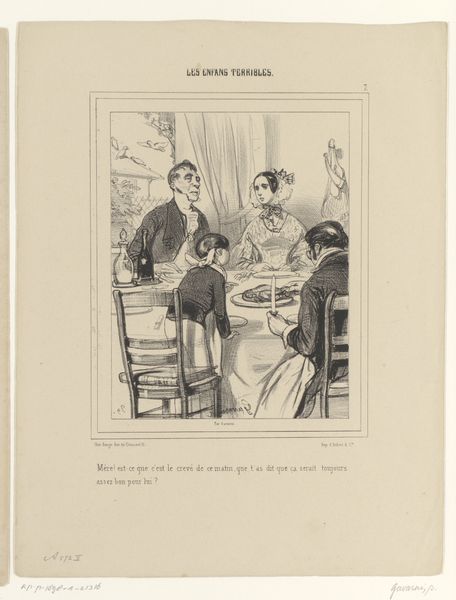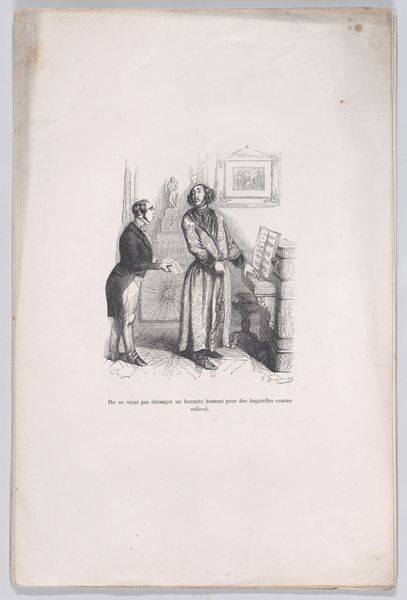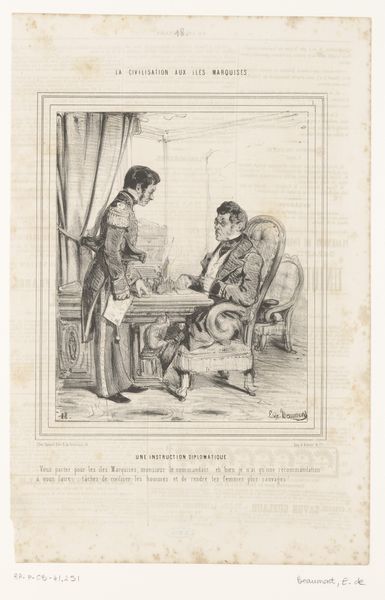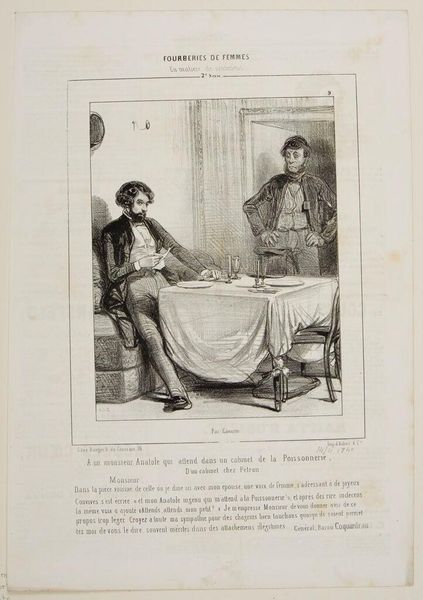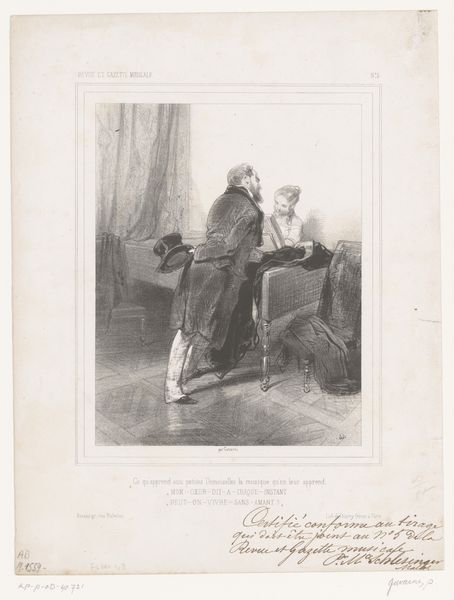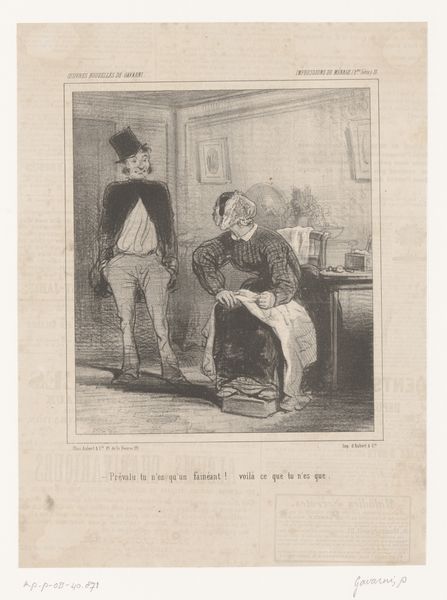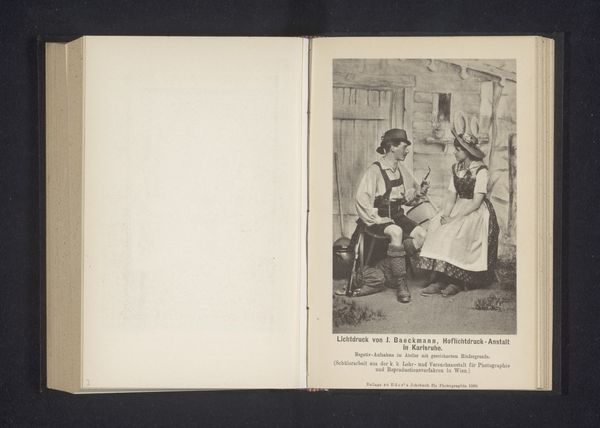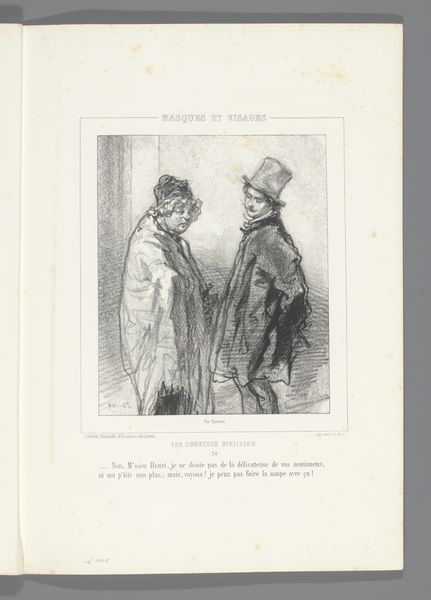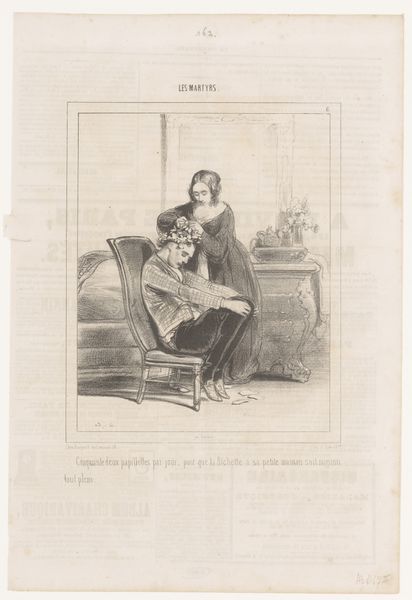
drawing, lithograph, print, pen
#
portrait
#
drawing
#
lithograph
# print
#
caricature
#
old engraving style
#
historical photography
#
intimism
#
romanticism
#
pen
#
genre-painting
Dimensions: height 359 mm, width 277 mm
Copyright: Rijks Museum: Open Domain
Curator: We're looking at a lithograph, "Young Man Reading a Letter in a Restaurant," created around 1840 by Paul Gavarni, now residing in the Rijksmuseum. It's rendered in pen. Editor: My first thought? Unease. The contrast between the elegant young man and the stark setting—it feels performative, like a stage. Curator: Gavarni was quite skilled at capturing social types of the period through caricature. It's part of a series called "Fourberies de Femmes," which translates to "Deceits of Women." This suggests a narrative about social interactions and perhaps, romantic intrigue. Editor: Right, so the discomfort could stem from the power dynamics implied by the title and the visual representation of this intimate moment—a man reading a letter, possibly private, in a semi-public space. It places him, and us, in a vulnerable position. Are we invited to see this letter or are we spying on it? Curator: That’s an astute observation. The composition encourages such a reading. The open door behind the waiter emphasizes accessibility and alludes to a context outside the private sphere. Gavarni was known for his acute social commentary, offering insights into Parisian life during the Romantic era. These prints circulated widely, shaping public opinion. Editor: Which means its accessibility becomes inherently political. Who had access to these prints and how did their viewpoints become normalized? Were these "deceits" truly universal or skewed towards a bourgeois, male gaze, reflecting anxieties about female agency? Curator: A pertinent consideration, certainly. The Romantic style adds another layer, perhaps idealizing or romanticizing the narrative to attract audiences and sell more prints. Editor: And masking underlying class and gender tensions, perhaps. Looking at it through that lens definitely complicates the image. Thanks. Curator: It also reminds us to engage critically with the visual stories we are presented with and who gets to tell them. A powerful point to end on.
Comments
No comments
Be the first to comment and join the conversation on the ultimate creative platform.
